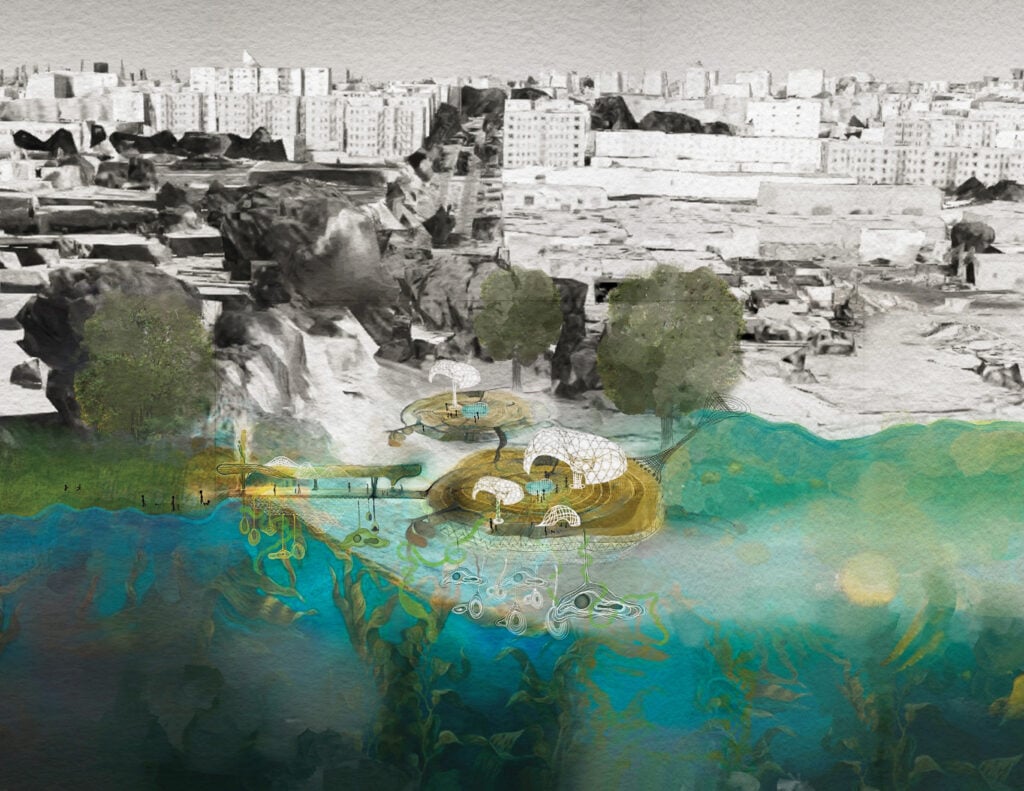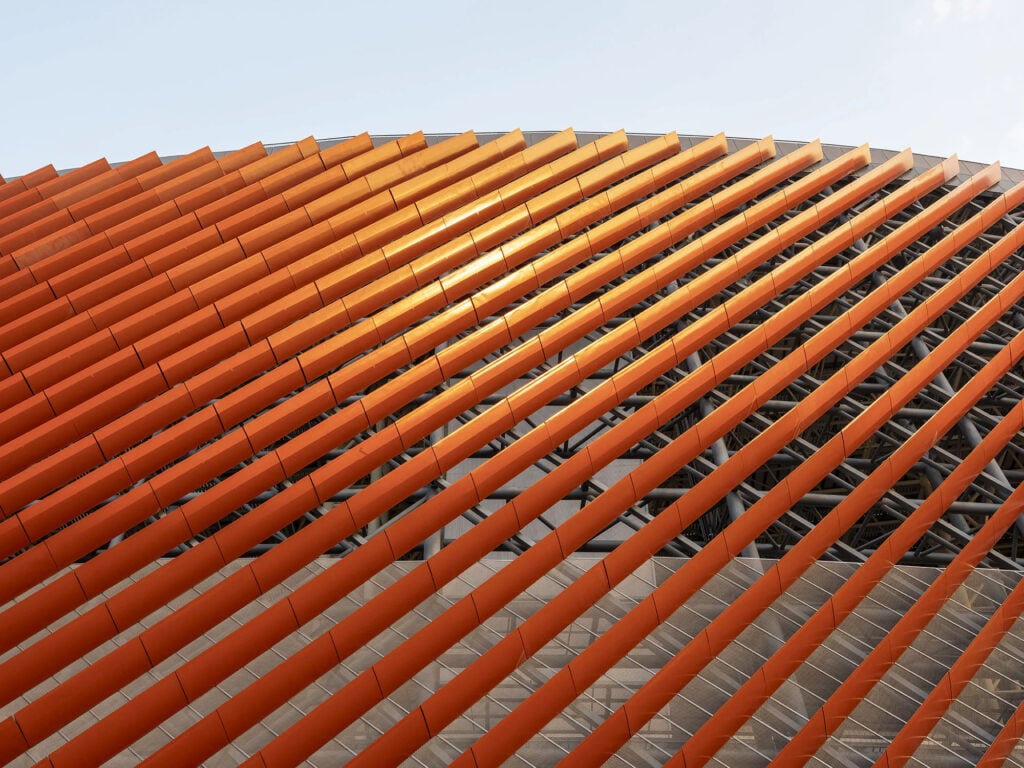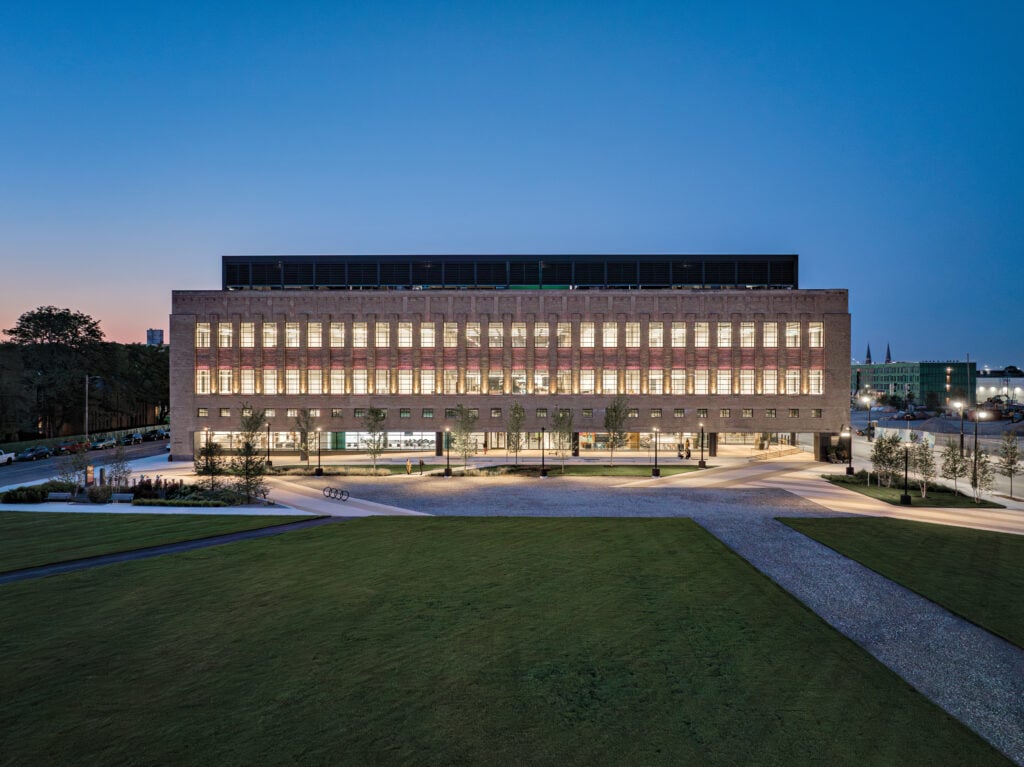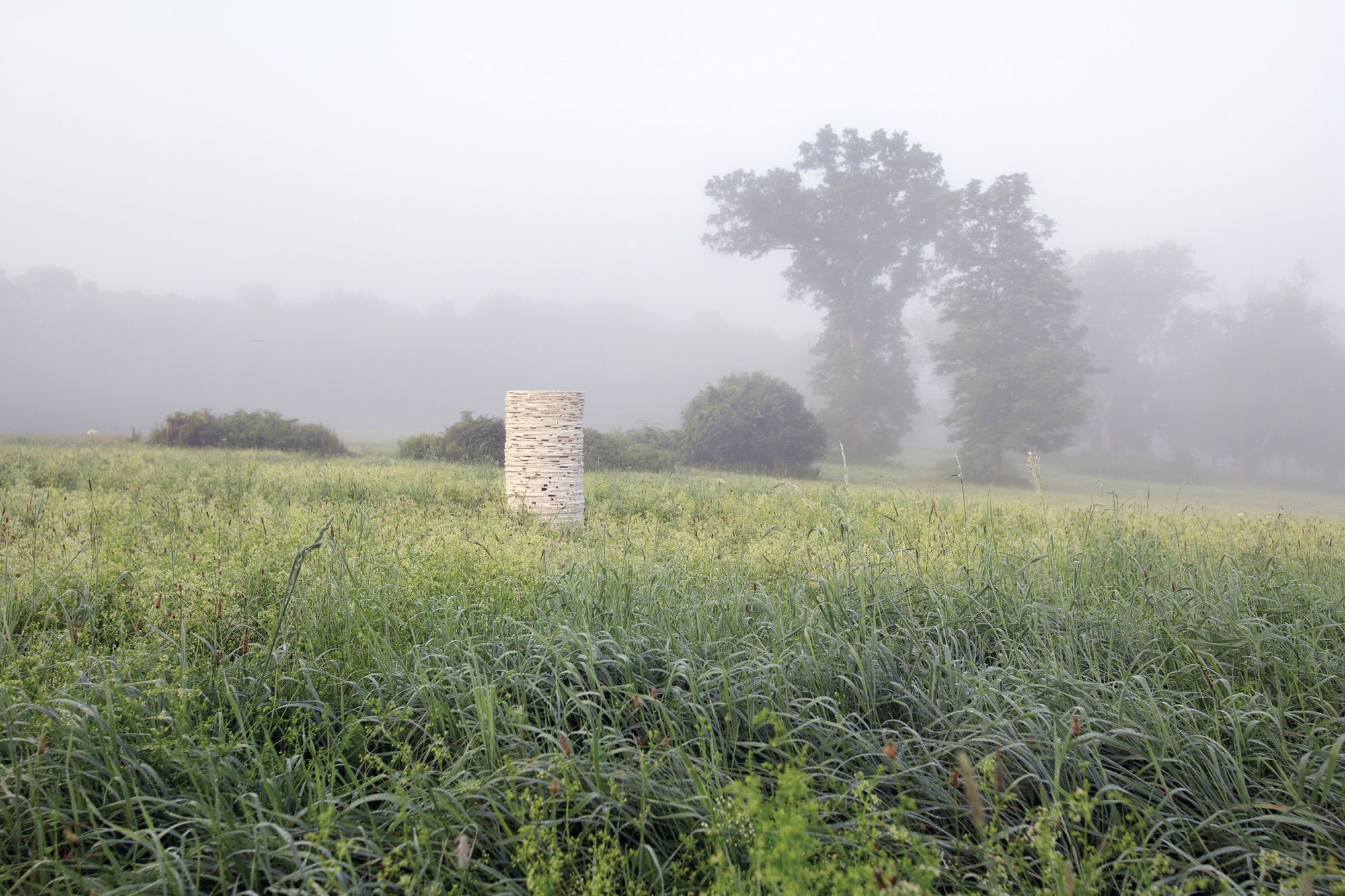
August 16, 2022
Present Practice Takes a Sensory Approach to Landscape Design

So, in the case of Meadow Lines, an ecological restoration of a former industrial soybean field, Jenkins spent hours, in all seasons and weather conditions, meandering. The project covers a one-acre test site within Waterman Farm, Ohio State University’s laboratory for agronomy and environmental science. Jenkins and Sutton have worked to transform the site into a biodiverse prairie and pollinator meadow, and Jenkins’s walks, recorded via GPS, informed its design: Paths have been mowed, allowed to grow back, and then re-mowed in different shapes and configurations creating impressions of previous paths layered on one another in ways that allow the site to shift and evolve over time.
This kind of analog, sensory approach is integral to Present Practice, which was named to reflect its underlying landscape philosophy. “It reflects our desire to be fully present in the work we do and to invite people to be present in the landscape and installations we create. It’s about being in a place long enough for it to act on you,” says Sutton.
The studio balances ecological, experiential, and artistic landscape agendas. And the founders’ backgrounds in fine arts further influence their methods, including the way they integrate hand drawing and sketching with natural materials such as soil, charcoal, sediment, and even remnants of pollution.
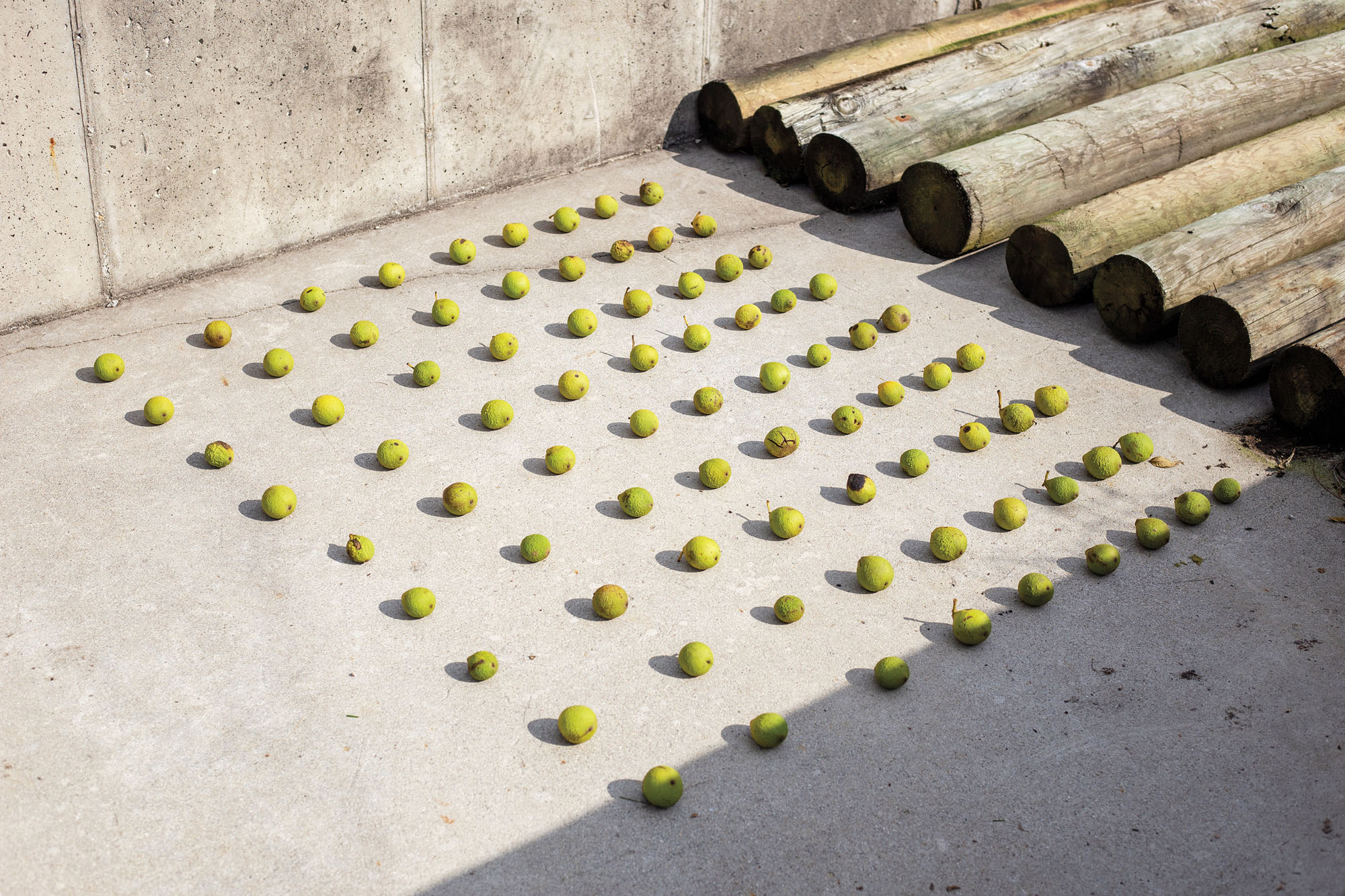
Such processes challenge long-standing ideas of what a landscape design studio can look like. And that’s how they like it. “We don’t rely on a traditional client-based practice,” according to Jenkins. Instead, their projects are primarily self-driven, fueled by residencies and grants, and taking the form of restorations, installations, research, and published reports.
As an associate and an assistant professor of landscape architecture at OSU’s Knowlton School of Architecture, respectively, Jenkins and Sutton view the relationship between their scholarship and practice as symbiotic. That thinking has led to multiple projects in development on-site at OSU: In addition to Meadow Lines, the firm designed Object Sketches, a series of temporary outdoor sculptures made from found and discarded agricultural objects and materials. It is also working with other Knowlton landscape faculty on the new Performance Adaptive Regimes for Campus Landscapes (PARCL), a program that aims to transform both underused and overly maintained parcels across OSU’s campus.
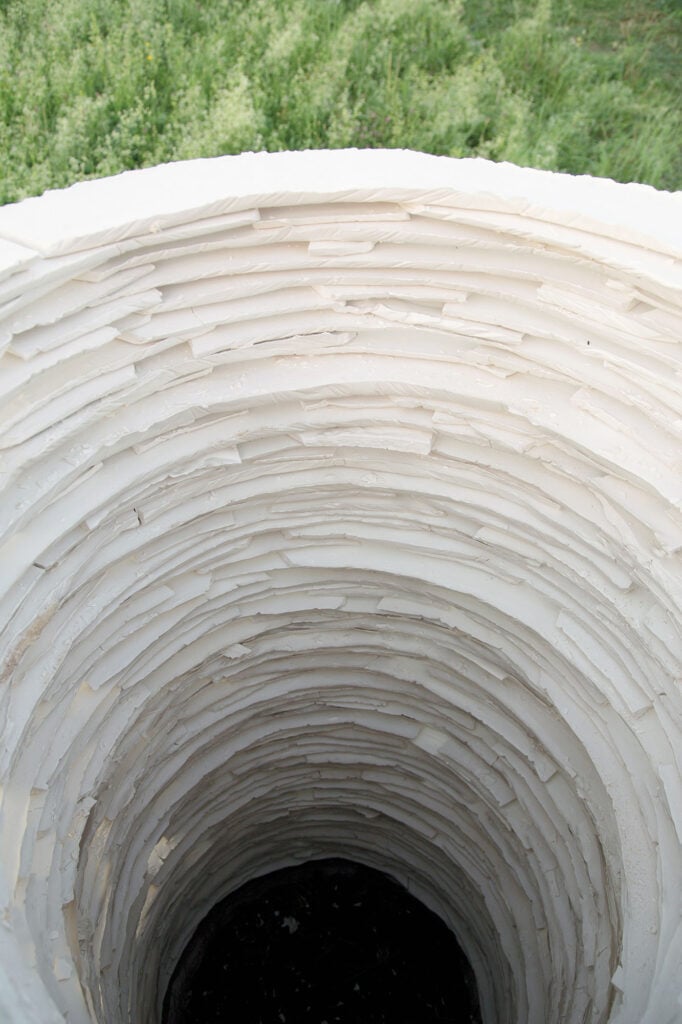

Given the site-specific nature of their work, resulting designs often interrogate and engage with Midwest agrarian landscapes. Sutton currently teaches a studio on Midwestern Aesthetics of Care that invites students to develop systems of maintenance to reduce carbon input, promote biodiversity, lower costs, and promote an alternative to the midwestern landscape aesthetic. “When we talk about aesthetics of care, we’re talking about what a chemical-free landscape might look like and how to make that palatable to a reluctant public. You might have a messier but more productive landscape system,” says Sutton.
Aesthetics of care—an idea first coined by landscape architect Joan Nassauer in the 1980s—is also the subject of their concept that won a Rome Prize for Landscape Architecture award; the project will explore “how systems of Roman landscape maintenance inform Rome’s landscape identity.”
“My hope is that Rome will be their first stop on a global tour to survey cultural landscapes of the world,” says their friend Susannah Drake of Sasaki. “Their work gives us important insights about the design of more sustainable landscapes in the face of the tremendous environmental change that we’re facing in the 21st century.”
Would you like to comment on this article? Send your thoughts to: [email protected]
Related
Profiles
Zoha Tasneem Centers Empathy and Ecology
The Parsons MFA interior design graduate has created an “amphibian interior” that responds to rising sea levels and their impacts on coastal communities.
Viewpoints
How Can We Design Buildings to Heal, Not Harm?
Jason McLennan—regenerative design pioneer and chief sustainability officer at Perkins&Will—on creating buildings that restore, replenish, and revive the natural world.
Products
Behind the Fine Art and Science of Glazing
Architects today are thinking beyond the curtain wall, using glass to deliver high energy performance and better comfort in a variety of buildings.





